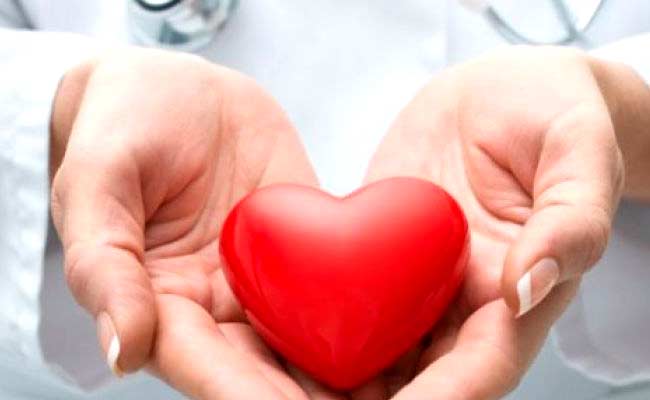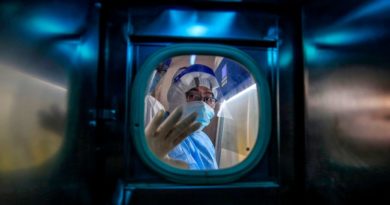Decoding the heat stroke and cardiac arrest connect
By,Dr. Dipak Bukhtar, General Physician at SRV Mamata Hospital
Do you feel uneasy owing to the scorching heat? Are you experiencing constant headaches, or suffering from high body temperature or rapid breathing? Then, it could be heat stroke. Nowadays, It is not uncommon to for summer temperatures to climb 40° C, dry heat is experienced in many parts of the country and is causing several health hazards including heat stroke.
All you need to know about it:
Heat stroke was first described by the Romans, as early as in the year 24 BC. Since then, Heat stroke has been a potentially fatal condition that results from elevated core body temperature of 104° F (40° C) or higher leading to acute dysfunction of the central nervous system, cardiac renal and muscular system. It is a medical emergency leading to mortality of 50 per cent, if not treated promptly.
The types of it:
Exertional heat stroke: Exertional heat stroke (EHS) can be defined as life-threatening hyperthermia (core body temperature ≥ 40.5°C [105°F]) and dysfunction of central nervous system (CNS). You will be shocked to know that EHS is one of the top three causes of sudden death in athletes.
Non-exertional heat stroke (NEHS): It tends to commonly affect sedentary elderly, persons who are chronically ill and very young people.
The causes:
Heat stroke may be caused secondary to prolonged exposure to a high environmental temperature or physical exertion in high temperatures. It can occur due to dysfunction of the muscular and central nervous systems, myocardial infarction, and renal failure. The condition is a medical emergency with an estimated mortality rate of 10-50 per cent.
Delay in treatment increases the risk of multi-organ dysfunction and even death. Be it exertional or non-exertional heat stroke, severity can be exacerbated due to wearing excess clothing, drinking alcohol, and not consuming adequate amounts of other fluids.
Decoding the relationship between heat stroke and cardiac arrest
Cardiac arrest refers to a disorder wherein pumping of blood to the heart and other organs is stopped, commonly occurs as a result of electrical signal dysfunction in the heart (arrhythmia). The brain is starved of oxygen in such cases, which may lead to loss of consciousness, and stoppage of breathing. Heat stroke has been reported to cause cardiovascular related abnormalities such as low blood pressure, malignant arrhythmias, myocardial ischemia, conduction related changes, etc. Initial symptoms of heat stroke may mimic that of heart abnormalities and there is evidence of global depression of cardiac function in such cases.
Extreme exertion, as in individuals training for sporting/military events, in outdoor settings in extremely hot temperatures is the chief cause for exertional heatstroke. Also, the affected individuals may present with symptoms of cardiac arrest such as confusion, difficulty in breathing, sudden collapse/loss of consciousness, and lack of response within seconds. Such cases of heatstroke tend to develop additional multi-organ damage as blood flow to the heart is affected. With appropriate care in the intensive care unit, steady recovery may be achieved.
Sudden exposure to hot weather may also predispose an individual to heat stroke and subsequent cardiac arrest. This is because the body does not have the time to acclimatize to the drastic change and causes dehydration. Subsequent derangement of electrolytes may lead to changes in electrical signaling of the heart and can lead to cardiac arrest.
Individuals under certain medications such as vasoconstrictors (used for narrowing blood vessels), beta-blockers (for high blood pressure), diuretics (for sodium and water balance), anti-depressants, etc. may be more susceptible to heat stroke. Being obese and leading a sedentary lifestyle are the common risk factors associated with both heatstroke and cardiac arrest.
The symptoms
The common symptoms of heat stroke include, High core body temperature (104° F/40° C or higher), hot red dry or damp skin, rapid pulse, headache, dizziness, nausea, confusion, and loss of consciousness. The rectal thermometer is used to obtain the core body temperature. In heat stroke due to hot weather, the skin will burn and may also dry out. However, in heatstroke due to strenuous exercise, the skin may feel dry or slightly moist. Hence, you should seek immediate medical attention. Furthermore, one may also exhibit symptoms like a high core body tempt, temperature 104 degree, rectal temperature is measured to obtain core body temperature, dry skin, confusion, disorientation, delirium, convulsions can occur in extreme cases and palpitation.
Complications of heat stroke:
• Central Nervous System (CNS): Acute confusion state (Delirium) and convulsions
• Cardiac: Arrhythmias, hypotension, cardiac arrest
• Kidney: Acute kidney injury related to muscle toxins
• Muscular system: Rhabdomyolysis- muscular breakdown, stiffness, rigidity
Who is at the risk of it?
• Toddlers, sportspersons, military units, elderly, diabetics, indulging in extreme physical activity in high temperature, can lead to the development of heat stroke.
• Patients taking certain medications including diuretics, B-blockers, anti-depressive medicines, anti hypertensive medications have blunted response to high temperature, causing a heat stroke.
The treatment:
• Medical care is essential to treat both heatstroke and resultant cardiac arrest. Initial management involves moving the person to a cooler place. The body temperature of the person should be reduced with the help of ice packs and cool towels.
• Do not give the one suffering from heat stroke anything to drink. Contact emergency services immediately as in-hospital aggressive reduction of body temperature during the golden hour (usually within an hour of the stroke) is vital to avoid cardiac and organ failure.
• The goal of the treatment is to reduce the core body temperature by at least 0.2°C/ min to approximately 39° C. Care must be taken to prevent extreme cooling and subsequent hypothermia.
• One the other hand, cardiac arrest is usually treated by cardiopulmonary resuscitation (CPR) and by use of a defibrillator. The purpose of CPR is to pump the heart to revive blood flow and circulation to organs. The defibrillator is a device that delivers an electric shock to the heart in an attempt to restore its normal rhythm.
• Calcium may be administered in patients with a known history of arrhythmias and high potassium levels.
• Glucose and salts are indicated to treat electrolyte imbalance and muscle breakdown.
• Other medications may be advised for the management of symptoms.
• Ventilator support may be needed in patients who are finding it difficult to breathe.
Follow these preventive tips:
• As mentioned earlier, adequate hydration is the key to most health problems arising in the summer season. Two-thirds of our body is comprised of water, which plays a major role in regulating body temperature. It is imperative to consume adequate fluids, especially when outdoors to prevent dehydration.
• Wear loose-fitting, cotton clothes that allow the body to cool properly.
• Do not underestimate the need for sunscreen as protection against sunburn is equally important.
• Opt for caps, hats, umbrella, scarves, socks, and sunglasses to protect yourself from the harsh sun rays, especially during afternoon.
• You need to be aware of any medication that you may be taking for systemic health conditions. So, discuss with your physician if any medication can increase your risk of heatstroke.
• Remember not to sit inside a car (especially do not lock children inside the car) parked in the sun. Internal temperatures may rise by 5-7° C in a locked car within 10 minutes, which may lead to heatstroke and suffocation.
• Avoid strenuous activity and plan your work such that you avoid exposure to the sun during the hottest hours of the day. Let your body adjust to the hot climate, as it may take up to several days to do so.




